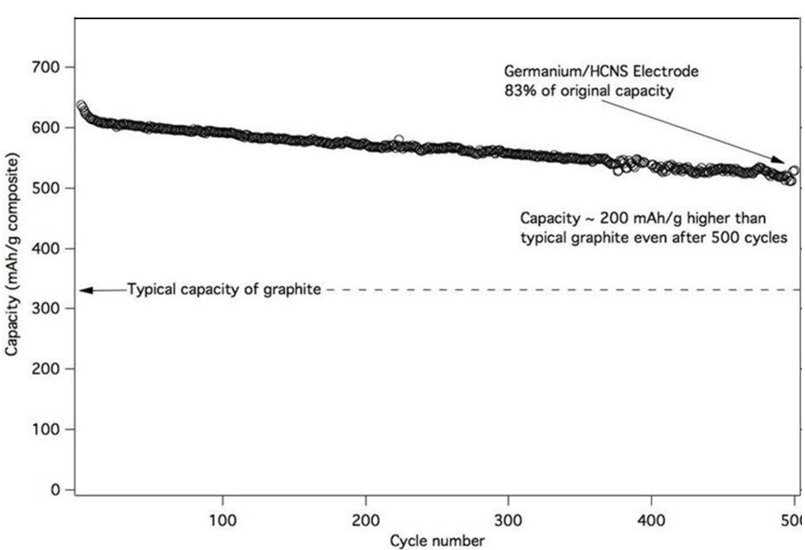The problem: most batteries use graphite as anode material. Graphite has poor energy storage capacity.
The solution: Researchers at the Geoerge Washington University (GW) have developed a new type of composite materials based on HCNS (hollow carbon nanospheres), which have the ability to charge at much higher rates and greatly exceed the energy-storage capacity of graphite when used to support Li-alloying or Li-compound forming materials.
GW researchers have developed a Li-ion battery anode and a cathode composite materials based on HCNS (hollow carbon nanospheres),which can be used in most electronic batteries. Graphitic hollow carbon nanospheres contain void spaces to alleviate local expansion of lithium alloying or compound formation, allowing for a higher degree of charge/discharge reversibility (i.e. long battery life).
The uniqueness comes in the combination of the HCNS with the lithium alloying metals and alloys (based on our patent US 8,262,942 and subsequent patent applications). This combination stands out because it achieves hundreds of charge/ discharge cycles with little charge capacity loss. The new material achieves high Coulombic efficiency throughout hundreds and hundreds of cycles (low Coulombic efficiency kills batteries in real world applications due to the limited electrolyte and cathode supply in real cells). In addition, these materials are developed with inexpensive, readily available materials and electrolytes like propylene carbonate, and work at very low temperatures.
This technology has an enormous commerical potential in a growing number of applications.

Fig. 1 - Sixty Percent Higher Charge Capacity than Graphite at 500 Cycles
Advantages:
- HCNS has the ability to charge at much higher rates than the most popular technology currently used in consumer electronics (graphite)
- This technology greatly exceed the energy storage capacity of graphite
- It has a higher degree of charge/discharge reversibility (i.e. long battery life)
- It achieves 100's of charge/discharge cycles with little charge capacity loss
Applications:
- Batteries that would charge at much higher rates than current technologies
- Composite material for batteries with higher energy storage capacity